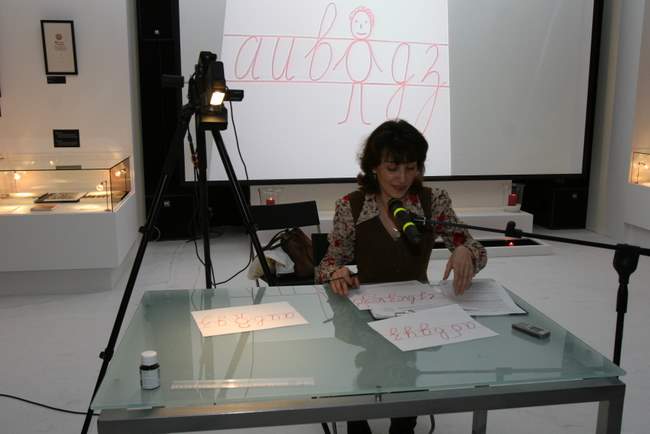December, 11, 12, 13, 14, 2008. “What a Letter Can Tell”, “Calligraphy and Graphology”. Master classes by graphologist, DSc (psychology) Larisa Drygval.
As it is well-known, calligraphy is the art of beautiful writing. But what happens if a professional graphologist sets down to unveil the mysteries of quaint letters? Will the calligraphic handwriting analysis’ results differ from those of usual handwriting analysis of one and the same author? By the way, what practical applications does graphology have these days?
The answers to all these questions were given during the master-classes by Inessa Goldberg, a Moscow graphologist, an expert from the School of Graphoanalytics, and by Larisa Drygval, DSc (psychology).
No one is born with the innate ability to write. First, when at school we study hard to steadily write letters on paper. Gradually this process becomes automatic. We think of WHAT to write almost never realizing HOW we do it. A person’s handwriting is closely related to her psychological and physical state. The letter forms, their height and inclination can say a lot about one’s character. The famous graphologist explained how one’s handwriting can reveal one’s character. If a line is “crawling” upwards, letters are round and a medium height , such person is kind and optimistic. Quite on the contrary, a person with tiny square penmanship inclined to the left is nervous and irritable.
It is common knowledge that the art of calligraphy has a beneficial effect upon personal mental and intellectual enhancement. Larisa Drygval focused on the influence of calligraphy on one’s patience and mental balance.
 Complexity through entertainment
Complexity through entertainment  I have a question
I have a question 